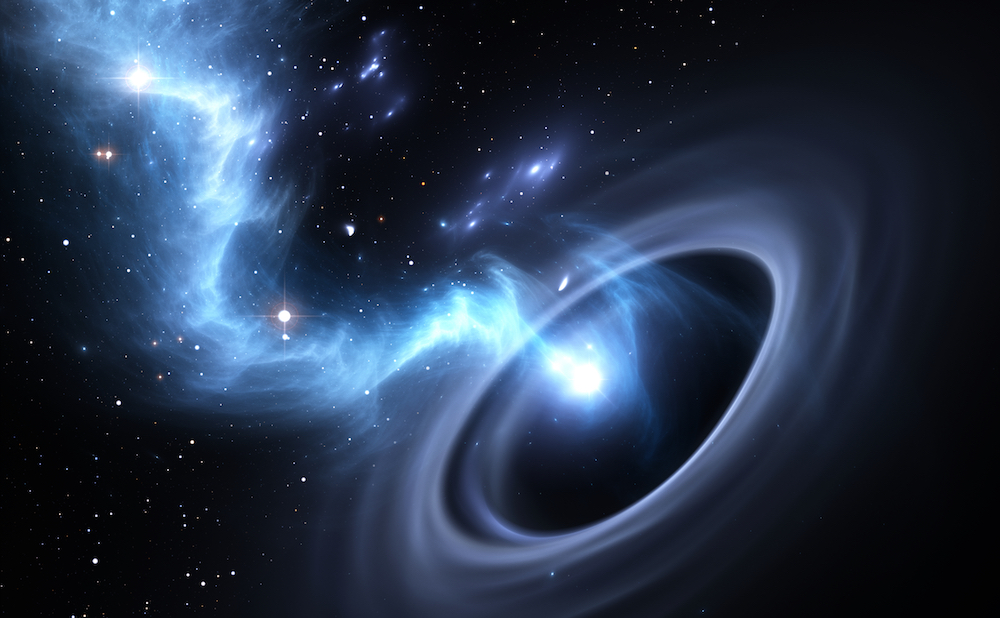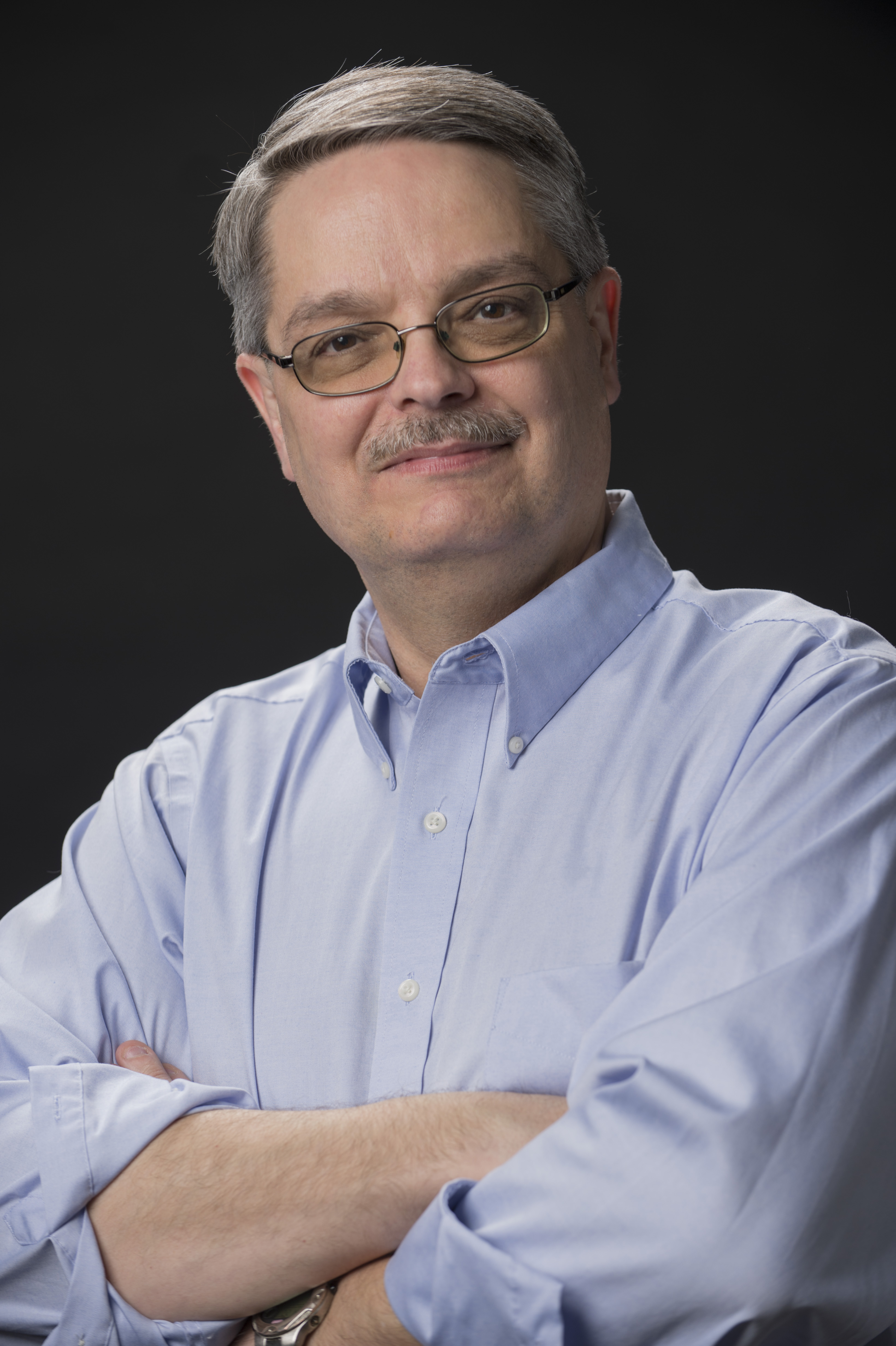
Matter Sucked in by Black Holes May Travel into the Future, Get Spit Back Out

Black holes are among the most mysterious places in the universe; locations where the very fabric of space and time are warped so badly that not even light can escape from them. According to Einstein's theory of general relativity, at their center lies a singularity, a place where the mass of many stars is crushed into a volume with exactly zero size. However, two recent physics papers, published on Dec.10 in the journals Physical Review Letters and Physical Review D, respectively, may make scientists reconsider what we think we know about black holes. Black holes might not last forever, and it's possible that we've completely misunderstood their nature and what they look like at the center, according to the papers. [Stephen Hawking's Most Far-Out Ideas About Black Holes]
The edge of Einstein’s physics
Astronomers and physicists have long held that the idea of a singularity simply must be wrong. If an object with mass has no size, then it has infinite density. And, as much as researchers throw around the word "infinity," infinities of that kind don't exist in nature. Instead, when you encounter an infinity in a real, physical, science situation, what it really means is that you've pushed your mathematics beyond the realm where they apply. You need new math.
It's easy to give a familiar example of this. Newton's law of gravity says that the strength of the gravitational attraction changes as one over the distance squared between two objects. So if you took a ball located far from Earth, it would experience a certain weight. Then, as you brought it closer to Earth, the weight would increase. Taking that equation to the extreme, as you brought the object near to the center of Earth, it would experience an infinite force. But it doesn't.
Instead, as you bring the object close to the surface of Earth, Newton's simple law of gravity no longer applies. You have to take into account the actual distribution of Earth’s mass, and this means that you need to use different and more complex equations that predict different behavior. Similarly, while Einstein's theory of general relativity predicts that a singularity of infinite density exists at the center of black holes, this can't be true. At very small sizes, a new theory of gravity must come into play. We have a generic name for this new theory: It's called quantum gravity. [8 Ways You Can See Einstein's Theory of Relativity in Real Life]
The name quantum gravity simply means "gravity at the smallest scales," but the phrase doesn't imply a specific theory. However, specific theoretical proposals have been made that would describe gravity as it is in the microcosm. One proposal is called loop quantum gravity.
Loop quantum gravity is well-defined mathematically, and it expresses the fabric of space-time as a lattice of spin networks, which evolve over time. Spin networks are just a mathematical formulation that describes how particles and fields interact. From a more practical point of view, loop quantum gravity predicts that space-time is quantized, with a smallest possible unit or piece of space and time, beyond which space-time cannot be subdivided further.
Loop quantum gravity is a difficult mathematical theory that has resisted the making of testable predictions inside black holes. However, Abhay Ashtekar and Javier Olmedo at Pennsylvania State University and Parampreet Singh at Louisiana State University have applied loop quantum gravity to the center of black holes. They claim that the result is not a singularity.
Sign up for the Live Science daily newsletter now
Get the world’s most fascinating discoveries delivered straight to your inbox.
Their calculation predicts that space-time is curved very strongly near the center of the black hole. The result is that space-time continues into a region in the future that has the structure of a white hole. A white hole is like a black hole in reverse, meaning that unlike a black hole, which pulls matter in, a white hole shoots matter out.
There is perhaps another way to imagine what they are predicting. It is well-known that in strong gravitational fields, time slows down. And black holes contain the strongest gravitational fields in the universe. Because of this, one possible interpretation of this new work is that matter falls into a black hole and then "bounces," shooting the mass back across the cosmos. Because time is so slow near the center of a black hole, that process simply is taking an enormous amount of time. If the researchers are correct, in the very distant future, where there are now black holes, matter will be erupting, spreading matter throughout the cosmos.
As always in theoretical science, there are many interesting and provocative ideas that just aren’t true, and this may be one of them. So it's important to see if there is experimental support for theoretical ideas like these.
There are a few possibilities. Scientists have observed very high energy phenomena in space that have not been completely explained. One is the existence of very high energy cosmic rays that hit Earth’s atmosphere. Another is what are called "fast radio bursts," which is when a large amount of radio energy is observed in a very short amount of time. Both of those phenomena could, at least in principle, be the signature of a black hole transitioning to a white hole.
It is certainly premature to accept this interesting new idea. Instead, it would be prudent to see how ongoing calculations using loop quantum gravity unfold. If predictions improve and begin to look more like some of the unexplained observed astronomical phenomena, it could be that this new result will both explain how quantum gravity works and reshape our understanding of both the past and the future of our universe.
- The Biggest Unsolved Mysteries in Physics
- What's That? Your Physics Questions Answered
- Science Fact or Fiction? The Plausibility of 10 Sci-Fi Concepts
Originally published on Live Science.
Don Lincoln is a physics researcher at Fermilab. He is the author of "The Large Hadron Collider: The Extraordinary Story of the Higgs Boson and Other Stuff That Will Blow Your Mind" (Johns Hopkins University Press, 2014), and he produces a series of science education videos. Follow him on Facebook. The opinions expressed in this commentary are his.
Don Lincoln contributed this article to Live Science's Expert Voices: Op-Ed & Insights.










